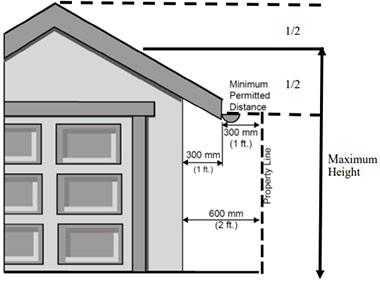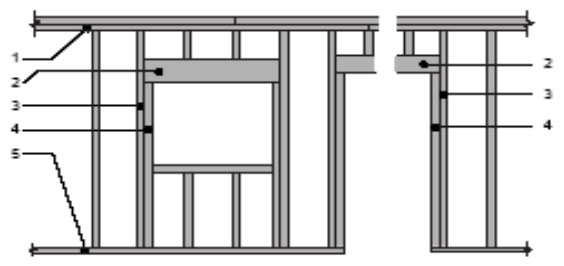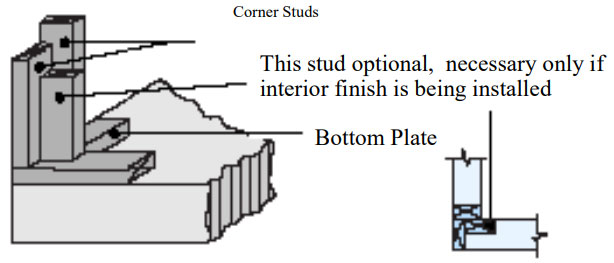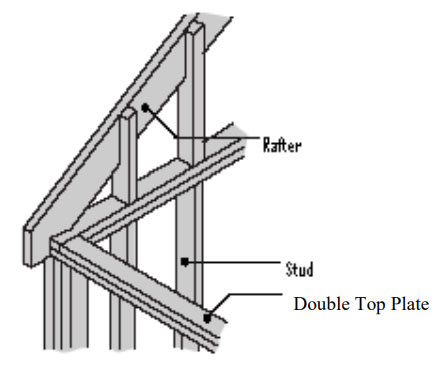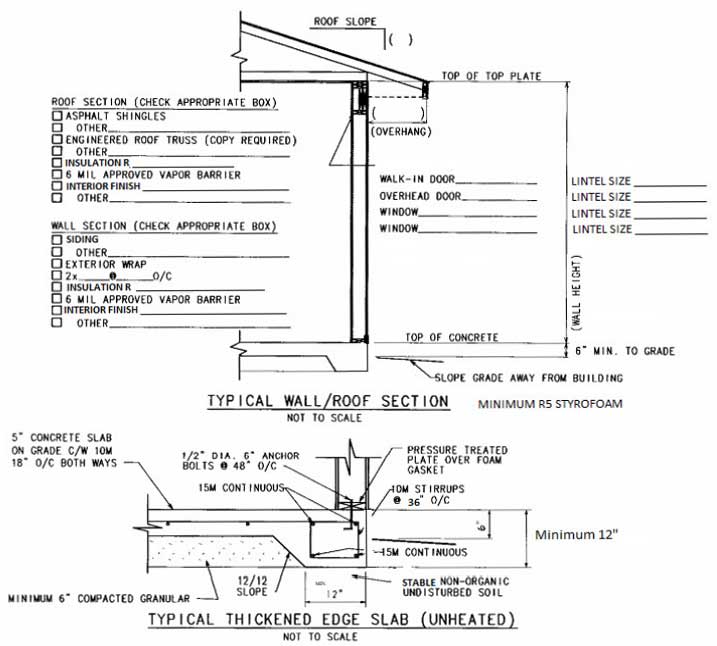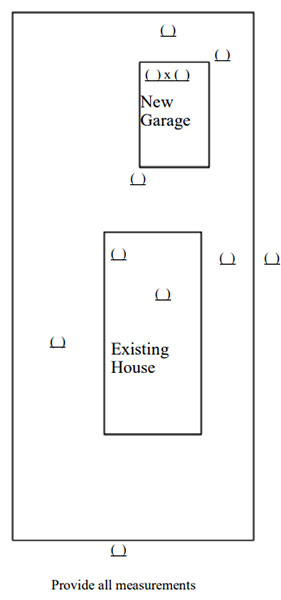
Detached Garages
Construction requirements for detached garages and storage sheds for residential dwellings
COMPLIANCE
Who enforces all of these requirements?
The Building Inspector of the Portage la Prairie Planning District is assigned the responsibility of monitoring construction for compliance with various Building Codes and By-Laws. This monitoring is carried out by means of the permit approval process and periodic site inspections.
The ultimate responsibility for compliance rests with the owner.
Is there any way that compliance with a certain aspect of the Building Code can be waived?
The Building Inspector does not have the authority to waive the requirements but does have the authority to accept equivalencies which meet the intent of the Building Code. If you feel that you can satisfy a Building Code requirement by using an equivalent material or construction method, contact the Building Inspector.
GENERAL INFORMATION
NOTE:
Detached garages and storage sheds vary in size and area and it is beyond the scope of this booklet to deal with every possible situation. The requirements and construction guidelines that follow are provided to assist you in designing and construction of a detached garage or storage shed which will comply with the Manitoba Building Code. If the nature of your project is different than that contained in this booklet and you are not familiar with the regulations that may be applicable, it is recommended that you contact someone who is knowledgeable in this area or contact the Portage la Prairie Planning District.
Is a building permit required to build a detached garage or storage shed?
Yes, a building permit is required. This permit may be obtained by submitting the required information to the Portage la Prairie Planning District.
Exception: Storage sheds that are 10 m (108 sq. ft.) or less in area do not require a Building Permit provided they are situated on the property in accordance with the Zoning By-law and do not create a hazard. Any building larger than 108 sq. ft. requires a Building Permit.
Does a carport require a building permit?
Yes, a building permit is required for the construction of a carport. If the carport stands alone or is attached to a detached garage, then the Zoning and Building Code regulations in this booklet apply.
If the carport is attached to the house or to an attached garage, then it must comply with the regulations for house additions. The Zoning and Building Code regulations for house additions are different from those contained in this booklet.
Do I need a permit for a foundation slab only?
Yes. The concrete slab for your future garage or storage shed must meet ALL applicable Building Code and Zoning By-Law regulations with respect to:
- allowable size
- appropriate thickness and reinforcing
- allowable distances from property lines and the dwelling
When you decide to proceed with the construction of the garage or storage shed, a building permit will be required at that time.
NOTE:
The concrete used for all detached garage and storage shed slabs must have a minimum compressive strength of 20 MPa (3000 psi) after 28 days, and must have air entrainment of 5 to 8 percent.
How much does a building permit cost?
Enquire at our office for the specific costs of a permit or check our website.
What information is required to make a building permit application?
You must present one copy of a Surveyor’s Building Location Certificate. As an alternate, a well drawn site plan showing all property dimensions, location of all buildings, and the location and size of the proposed structure (with a dashed line) may be acceptable. See Figure 6.
Construction plans are required and the size of the building will determine the type and amount of Information required. See Figure 5.
Is the City sidewalk, lane pavement or neighbour’s fence the property line?
No. The only accurate way to determine your property line is with a Building Location Certificate from a Manitoba Land Surveyor.
How can I obtain a building location certificate?
Check your records. Most homeowners already have this document - it usually comes with the purchase of a house. Otherwise, the services of a qualified Land Surveyor must be obtained.
How close can I build to the property lines?
In most cases when a garage or storage shed is built to the rear of the dwelling, it can come as close as 600 mm (2 ft.) to the side and rear property lines if zoning permits.
A garage or storage shed located beside the dwelling or on a reverse corner lot requires different setbacks. Call for further information regarding setbacks.
Do these setbacks include the overhang?
No. The required setbacks are measured from the property lines to the wall of the garage, shed or carport posts. On a 600 mm (2ft.) setback a 300 mm (1 ft.) overhang is permitted. Eavestrough may be added to the 300 mm (1 ft.) overhang.
NOTE:
It should be recognized that if a larger overhang is desired, then the garage or storage shed wall must be set back further from the property line. A clear separation of 300 mm (1 ft.) from the property line to the eaves must always be maintained as shown in Figure 1. In this example the 300 mm (1 ft.) overhang requires that the garage wall be set back 600 mm (2 ft.) from the property line. However, some zones require larger setbacks.
|
Figure 1 – Setback from Overhang
|
What is the maximum height allowable?
The maximum height allowable for a garage or storage shed is 4.6m (15 ft.). The height is from grade to midpoint of eave and peak on a gable or hip roof.
How large of a garage can I build?
The size of a garage, shed or carport or combination of accessory buildings and uses cannot exceed a percentage of the lot area which varies depending on the zone located in. Call for more information.
If I cannot meet these requirements, what are my alternatives?
To vary these requirements you must apply for a Zoning Variance.
FIRE PROTECTION & FRAMING
Do I have to fire rate the exterior walls?
You must fire-rate only those walls which are closer than 600 mm (2 ft.) to any property line which faces an adjoining property. If the wall faces a street or a public lane, this requirement does not apply.
NOTE:
It is possible that in some instances the Zoning By-Law may not permit a wall to come closer than 600 mm (2 ft.) to a property line.
Fire-rating of walls can be achieved by applying a layer of 15.9 mm (5/8 in.) fire-rated drywall or 12.7 mm (1/2 in.) fire-rated (Type X) drywall or equivalent to the inside face of the wall.
Can I have windows in the walls?
Windows and other openings, including doors, are only permitted in a wall if the wall is 1.2 m (4 ft.) or more from the property line of an adjoining property. If the wall faces a street or a public lane, this requirement does not apply. The above requirements for fire rating of walls and placement of windows or other openings in these walls are designed to limit fire spread between building on adjoining lots.
What types of framing methods are acceptable?
Framing methods must be in accordance with good construction practice. A detailed discussion of this aspect of construction is beyond the scope of this publication. However, some common framing details are indicated on the following pages. Refer to Figures 2, 3, & 4.
|
Figure 2
|
|
Notes to Figure 2:
Refer to Manitoba Building Code for framing infomation. |
|
Figure 3
|
|
Figure 4
|
|
Figure 5
|
|
Notes to Figure 5:
|
|
Figure 6
|
Every effort has been made to ensure the accuracy of the information contained on this page. However, in case of a discrepancy between this information and the respective By-laws, the By-law will take precedence.
Please contact us for further information.
This website uses cookies to understand your use of our website and to give you a better experience. By continuing to use the site or closing this banner, you agree to our use of cookies. To find out more about cookies and how to change your choices, please go to our Privacy Policy.


